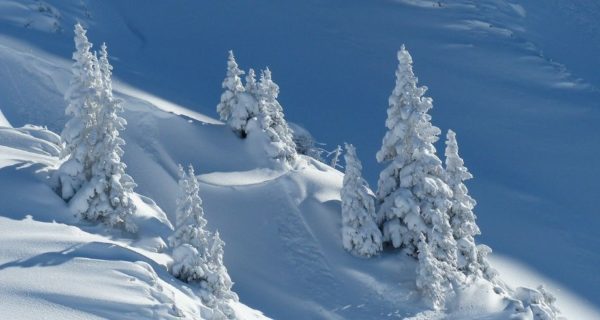There are so many sayings and folklores surrounding predicting if winter is going to be a harsh one or not, many of which date back for hundreds of years. Many of these folklores on predicting weather patterns emerged when mankind was more in touch with nature, though, and so should not be dismissed lightly. Several revolve around changes in nature, such as; larger fruit and nut harvests, spring flowers blooming again in autumn, or even weather patterns in August and October.
It is said that if it is sunny on October 9th, then the winter will be a cold one; or that for every fog in August, there will be a snow fall in winter. These simply depict changes in weather conditions observed over time. Yes, they are a bit vague and do not accurately predict the weather, but they can still provide a good indication. A dry and sunny October, can mean a wet and cold winter; for every sunny day, more water evaporates, meaning more chance for rain and snow later on.
It is also said that large fruit or nut harvests can indicate a harsher winter. This makes logical sense, as it is nature’s way of preparing animals for the coming winter. That’s not to say that this is guaranteed but, again, it can be used as a general indication – the more foragable food around, the more there is for animals to eat and prepare for a colder winter.
Is there any scientific evidence to support these though? Well, the answer is both yes and no. Unfortunately, there have not been many studies conducted to confirm or deny these unusual beliefs, so it is very hard to conclusively confirm them one way or the other. However, there are many who swear by them, many of whom are people who work closely with nature and the land. I have had many conversations with people who grow things, and they seem to have a sixth sense for the coming weather.
Since moving to rural Italy, we are very much subject to the weather. We live in the foothills of the Gran Sasso national park, and so when it snows it’s very difficult to go anywhere (as we don’t own a giant 4×4 or snow plough – that being said, our local community is very good at clearing the roads regularly, for which we are grateful). A few years back, though, my sister experienced a huge snow fall of two meters – which was very unexpected, and something we were not fully prepared for.
Needless to say, we learnt a lot from this and so make preparations each year now, just in case we get snowed in for a long period of time – our tie with nature and weather patterns has become very much stronger. We actually use the local Gran Sasso mountain range as an indication of when the snow is coming – as you can see it in the distance from where we are and the lower the snow is on it and the whiter the mountain gets, the nearer we are to having snow at our property (being at a much lower altitude).
The past few years we have only had a minor amount of snow each year, with this last year barely having any at all. This followed by the very dry year we have had, leads us to feel that it is going to be a bad winter again. This is also accompanied by the fact that we can already see the first patch of snow on the mountains (arriving on the 27/09/20) – not a great indicator for the coming winter.
As a matter of interest, I will be looking out for these signs in the coming months, to see how many of these folklores on predicting winter are actually true, and will do a follow-up article in the new year once we have witnessed our winter season for this year. (As it tends to snow anywhere from the end of December to March and even sometimes May where we are). Let’s see if there is any truth to some of these folklores.
